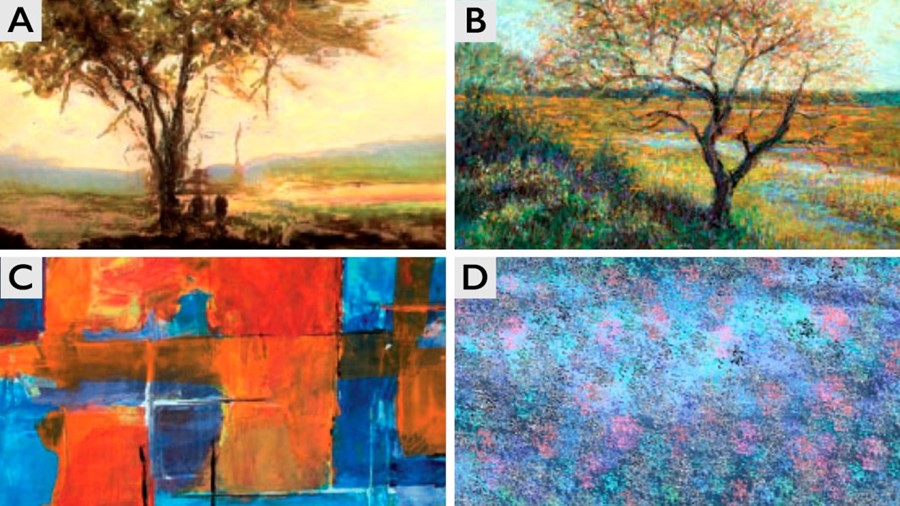A new study that measures how humans perceive artworks generated by artificial intelligence, alongside artworks created by humans, has concluded that a majority of people basically can’t tell the difference.
Published in the journal Empirical Studies in the Arts by researcher Harsha Gangadharbatla, the study was inspired by the sale of “Edmond de Belamy”, an AI-generated portrait by the creative studio Obvious. Hailed as “the future”, the artwork fetched around ten times the average price for a male artist at auction (and 20 times more than artworks by women), going for $432,500 at Christie’s in 2018.
The hype around “Edmond de Belamy” wasn’t an isolated occurrence, either. In a 2017 study that asked people to compare a selection of AI artworks and actual Art Basel pieces, people mostly preferred the artworks created by machines.
“For me, the interesting thing was the role of humans in producing art,” Gangadharbatla tells Artnet. “I always assumed there was a soul that the human pours into the work. When a machine creates the work, how do people interpret it? Are they still moved? What role does the knowledge of who produced the artwork play in how it is perceived?”
The study consisted of a survey asking respondents to distinguish between human and AI artworks. The human pieces were created by artists Tom Bailey and Steve Johnson – impressionistic landscapes and geometric abstractions, respectively – while the computer-created artworks were the work of a single artist’s algorithms.
Of the hundreds of people that responded to the survey, a majority were unable to correctly attribute more than one in five landscape works created by the AI. More than 75 per cent guessed wrong on the remaining four. People were slightly more successful at attributing the AI’s abstract artworks, signalling a tendency to equate abstraction with AI and representational art with a human creator.
While Gangadharbatla says that AI creating artworks is relatively harmless (unless, presumably, you’re a human artist that doesn’t need any more competition), he adds that advertising could be a different story. “If computers start producing persuasive messages and they’re put in front of people,” he asks, “what effect would that have?”
In more recent news from the robot art world, Ai-Da (AKA the world’s first AI humanoid to create art without human input) announced a new exhibition of self portraits, set to go on display at London’s Design Museum. Earlier this year, OpenAI also debuted DALL·E, a neural network that can create bizarre images based on written descriptions.
In case you’re still trying to figure out whether the images above are made by humans or AI, they are, in order: AI, human, human, and AI.
